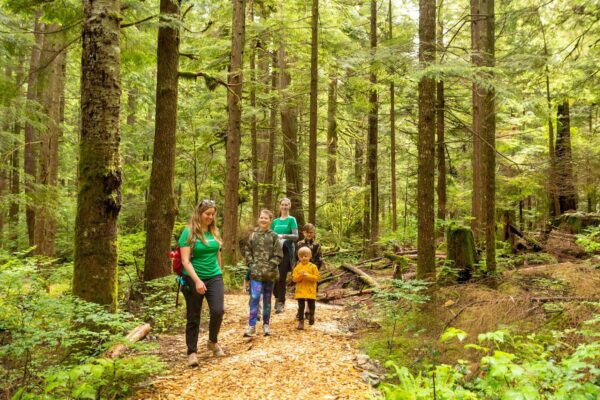Have you ever stopped to watch a beetle crawling across a log, or a butterfly fluttering past a flower? Maple Ridge’s forests are full of insects doing amazing things every day. If you like observing these tiny creatures, you might already be an entomologist in training!
In this guide, we’ll learn what entomologists do, meet some common local insects, and share fun ways you can explore the insect world around you.
What Makes an Insect an Insect?
It can be tricky to know which tiny creatures count as insects. Here’s a simple checklist:
- Six legs (spiders and slugs don’t qualify!)
- Three body parts: head, thorax, and abdomen
- Most have wings at some point in their life
- Antennae for sensing the world around them
If it doesn’t check those boxes, it’s not an insect – but it might still play an important role in the forest.
What Does an Entomologist Do?
An entomologist is a scientist who studies insects – everything from how they look and behave to how they help the environment. They might:
- Watch ants building tunnels
- Study how honey bees pollinate flowers
- Track how moths or butterflies grow from caterpillars
In other words, entomologists are bug detectives. They help us understand how insects affect farming, forests, and even human health.

Meet Maple Ridge’s Insect Residents
Maple Ridge is home to hundreds of insect species. Here are some you’re likely to spot:
Lady Beetles (Ladybugs)
Small, round beetles, typically with bright red or orange shells and black spots. People often call them ladybugs, but “lady beetle” is their real name.
- Fun Fact: Lady beetles aren’t all red – some are yellow or even black.
- Why They Matter: They’re natural pest controllers, eating aphids and protecting plants without chemicals.
- Species to Spot: Asian Lady Beetle, Seven-spotted Lady Beetle.
Dragonflies
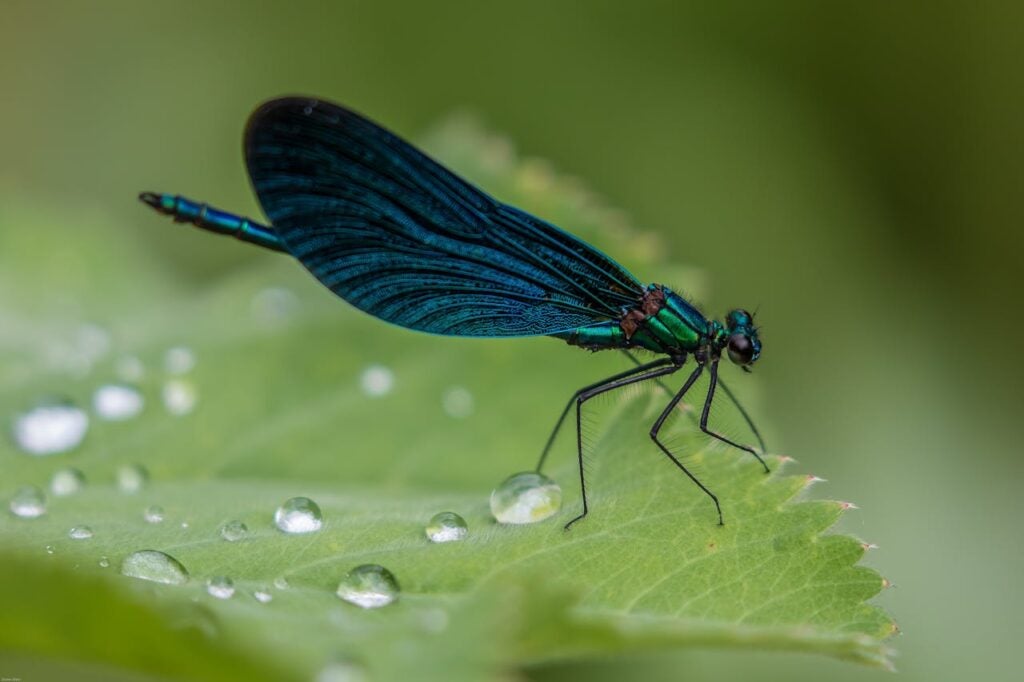
Fast flyers with long, slender bodies and two pairs of clear wings. Look for them zipping over ponds.
- Fun Fact: Dragonflies can fly in all directions — even backwards!
- Why They Matter: They eat mosquitoes and flies, keeping bug numbers in check.
- Species to Spot: Common Whitetail, Four-spotted Skimmer, California Darner.
Butterflies
Colourful and graceful, butterflies are favourites for many nature lovers. They start life as caterpillars before transforming.
- Fun Fact: Their wings are covered in tiny scales that shimmer in the sun.
- Why They Matter: They pollinate flowers, helping plants reproduce.
- Species to Spot: Western Tiger Swallowtail, Mourning Cloak, Lorquin’s Admiral.
Water Striders
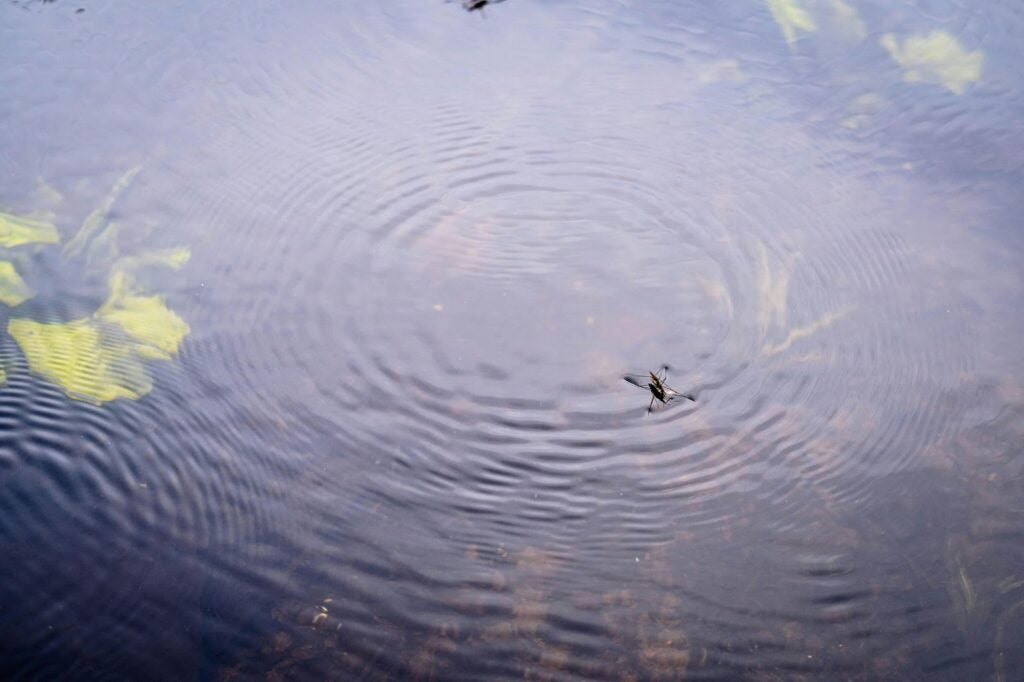
These “pond skaters” glide across the surface of still water. Their long legs spread their weight so they don’t sink.
- Fun Fact: Their bodies are coated in water-repellent hairs that keep them dry.
- Why They Matter: They’re part of freshwater food chains, feeding fish and other animals.
- Species to Spot: Common Water Strider, Large Water Strider.
Ants
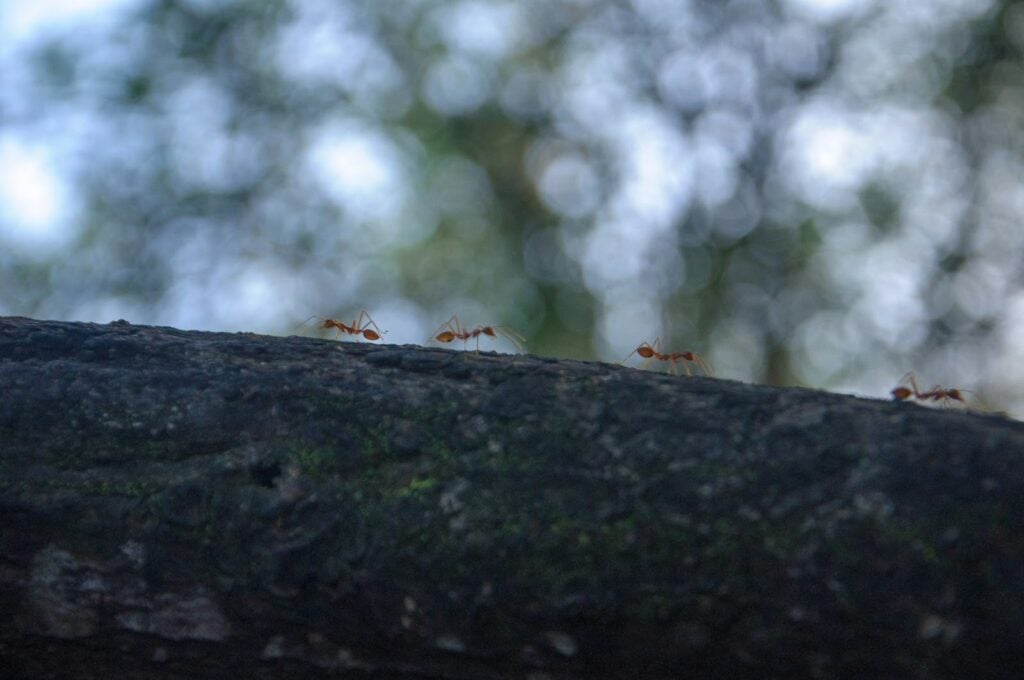
Tiny but mighty, ants live in colonies and are always on the move. They dig tunnels, carry food, and defend their nests.
- Fun Fact: Ants “talk” to each other using special scents called pheromones.
- Why They Matter: They aerate soil, recycle nutrients, and help seeds spread.
- Species to Spot: Carpenter Ant, Thatching Ant.
Bees
Fuzzy and buzzing, bees are essential pollinators that help plants grow food.
- Fun Fact: Honey bees perform a “waggle dance” to show their hive mates where flowers are.
- Why They Matter: Without bees, many fruits, vegetables, and flowers couldn’t grow.
- Species to Spot: Western Honey Bee, yellow-faced Bumble Bee.
Bonus Creatures (Not Insects!)
Slugs

You’ll probably spot these slimy creatures on the forest floor in Maple Ridge. Some, like the banana slug, can grow as long as your hand!
- Fun Fact: Slugs are not insects at all – they’re gastropods, related to snails. Instead of legs, they move on one large “foot” and leave behind a shiny slime trail.
- Why They Matter: Slugs help recycle dead plants and turn them into rich soil, which makes them an important part of the forest.
- Species to Spot: Pacific Banana Slug, Dusky Arion.
Spiders
Spiders aren’t insects either, but eight-legged arachnids. They weave webs and help keep insect numbers in check.
- Fun Fact: Some jumping spiders can leap more than six times their body length.
- Why They Matter: By eating flies, mosquitoes, and other insects, spiders help control pests and keep ecosystems balanced.
- Species to Spot: Cross Orbweaver, Jumping Spider
For a more comprehensive list of insects in the area, check out iNaturalist’s list of Insects in Maple Ridge:

Try Your Own Insect Investigation
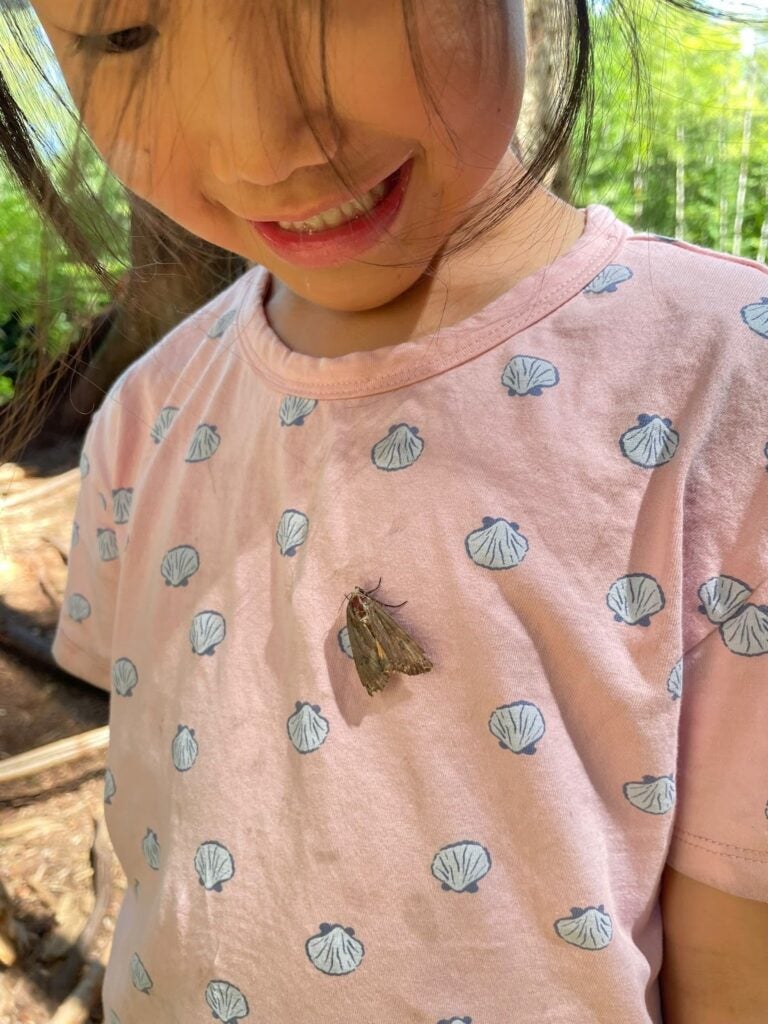
Want to be a young entomologist? Here are some fun ways to start:
- Bug Bingo: Make a checklist of insects to find, like a swallowtail butterfly, water strider, or western honey bee.
- Nature Journal: Draw the insects you see and write where you found them. Make a note about what the insect is doing – eating, flying, crawling, or carrying something?
- Photo Safari: Take photos of insects you find and upload them to iNaturalist to help scientists track local species.
- Use Tools: A magnifying glass helps you spot tiny details.
Remember: Look, don’t touch. Be gentle and leave insects in their homes.
Why Insects Matter
Insects aren’t just cool to watch – they’re important for nature!
- Pollinators: Bees and butterflies help plants grow fruits and seeds.
- Soil Builders: Ants and beetles keep soil healthy by digging and breaking down old plants.
- Recyclers: Flies and beetles clean up dead plants and animals.
- Food for Wildlife: Birds, frogs, fish, and even bears depend on insects.
- Pest Controllers: Lady beetles and dragonflies eat insects that harm plants.
- Health Clues: The presence of insects like mayflies shows that streams and rivers are clean.
Every insect, no matter how small, plays a role in keeping the forest balanced.
Come Explore With Us
At Wild & Immersive, we love introducing kids and teens to the wonders of nature. Whether you join us for Forest School, come on a field trip, or explore during one of our special events, you’ll get the chance to discover Maple Ridge’s tiniest but most important residents.
Next time you’re outside, take a closer look. You might just spot a new insect friend and start your own bug-detective adventure!






